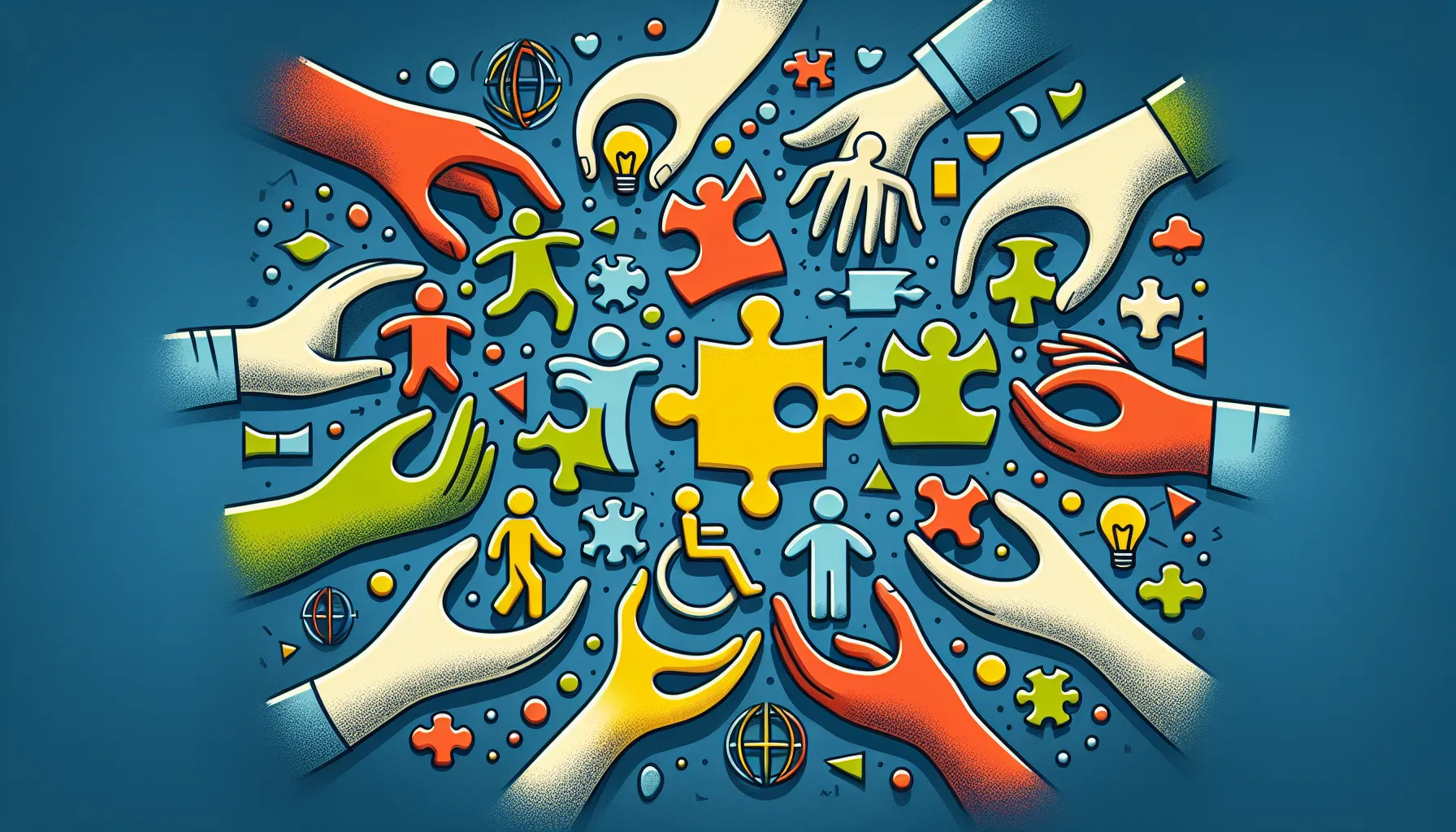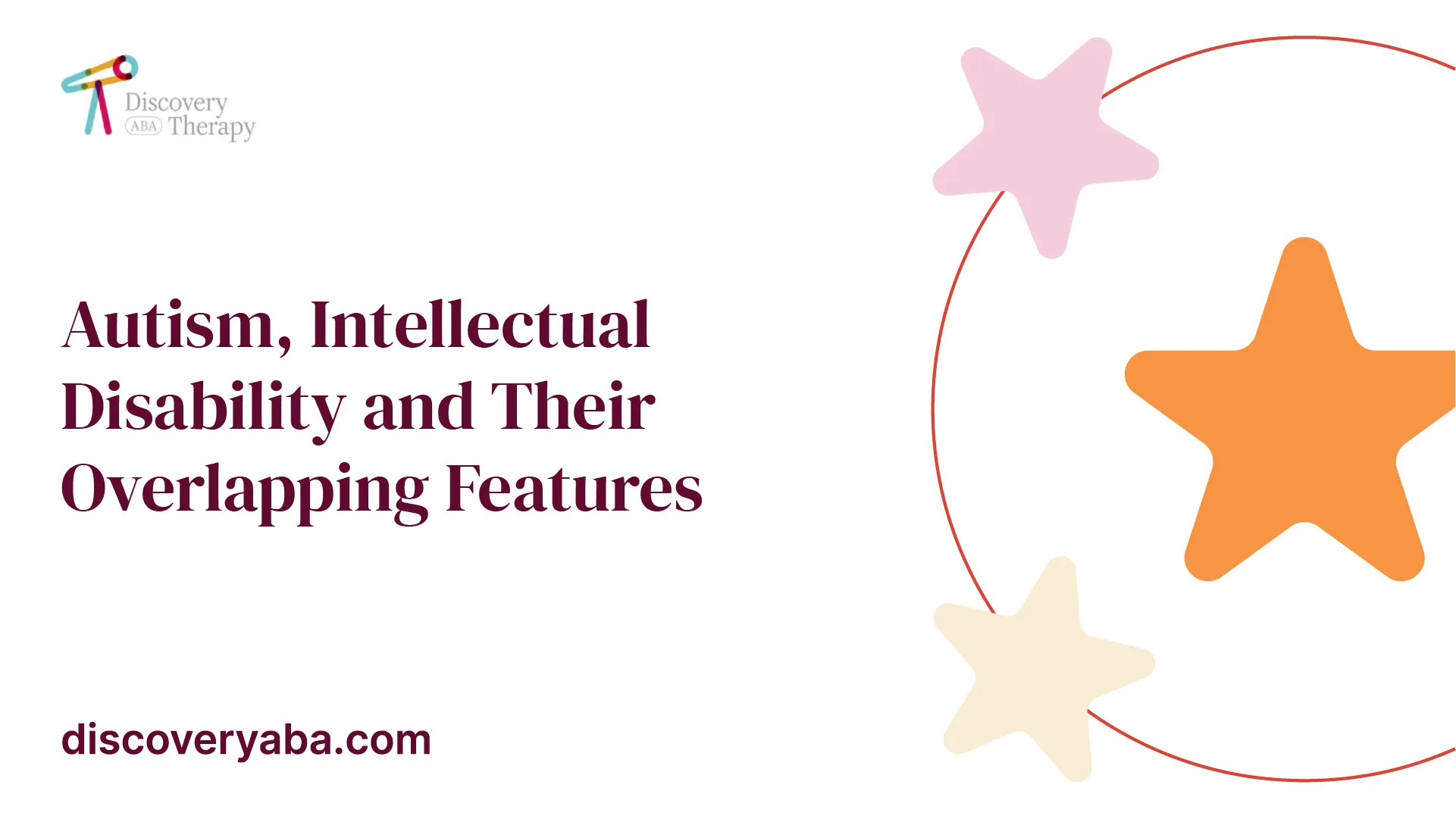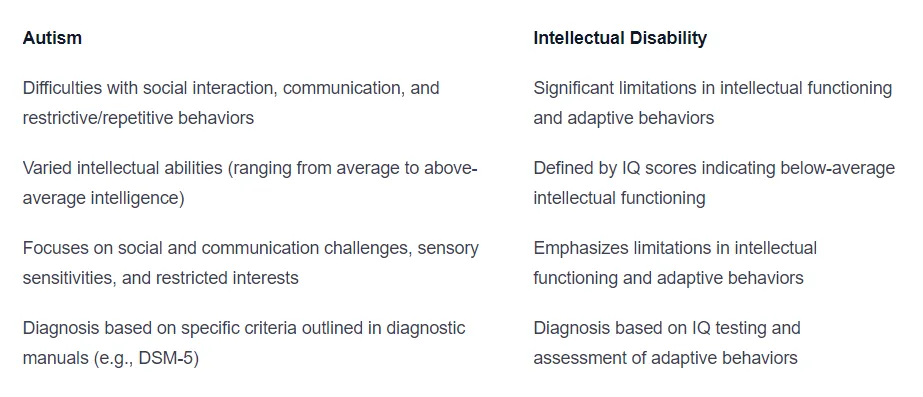Autism, Intellectual Disability and Their Overlapping Features
Unraveling the connection between autism and intellectual disability. Explore the overlapping features and find guidance for support.

Understanding Autism and Intellectual Disability
When discussing autism and intellectual disability, it is important to understand their distinct characteristics and the ways in which they overlap. While these two conditions are often conflated due to the unclear biological distinction between them, it is essential to differentiate and comprehend their unique aspects for scientific progress and appropriate interventions.
Autism and Intellectual Disability: Overview
Autism, also known as Autism Spectrum Disorder (ASD), is a developmental disorder characterized by difficulties with social interaction and communication, as well as restricted and repetitive behaviors. Individuals with autism may have diverse strengths and challenges. They may excel in certain areas while experiencing difficulties in others. Autism affects people across a wide range of intellectual abilities, from those with average or above-average intelligence to those with intellectual disability.

Intellectual disability, on the other hand, is a classification based on IQ scores and refers to significant limitations in both intellectual functioning and adaptive behaviors. It is important to note that not all individuals with autism have an intellectual disability, and vice versa. However, research indicates that up to 40% of individuals with autism also have an intellectual disability, highlighting the potential co-occurrence of these conditions.
Differentiating Autism and Intellectual Disability
Though autism and intellectual disability can co-occur, they are distinct conditions with unique characteristics. Understanding the differences between them is crucial for appropriate educational, therapeutic, and life skills interventions. Here are some key points of differentiation:

Understanding the distinctions between autism and intellectual disability is essential for professionals, caregivers, and educators to provide appropriate support and interventions tailored to the unique needs of individuals with these conditions. By recognizing the overlapping features and divergent aspects, we can better navigate the spectrum and promote the well-being and development of individuals with autism and intellectual disability.
The Relationship Between Autism and Intellectual Disability
Autism and intellectual disability are two distinct conditions that are often interconnected. While they share some overlapping features, it is important to understand the relationship between these two conditions.
Prevalence of Intellectual Disability in Autism
Research has shown that there is a significant prevalence of intellectual disability among individuals with autism. Approximately 33% of children with autism also have an intellectual disability, which can impact their ability to function at school and in other settings, according to the Centers for Disease Control and Prevention (CDC). Moreover, studies have found that between 40% and 48% of children with autism have an intellectual disability.
It is important to note that the presence of intellectual disability in individuals with autism can vary widely. Intellectual disability can range from mild to severe, affecting cognitive functioning and adaptive skills. The severity of intellectual disability can impact an individual's ability to communicate, learn, and independently navigate daily life.
Co-Occurrence of Autism and Intellectual Disability
The co-occurrence of autism and intellectual disability is a complex and multifaceted relationship. While not all individuals with autism have an intellectual disability, research has shown that a higher percentage of individuals on the autism spectrum have intellectual disability compared to the general population.
According to a study by the Children's Hospital of Philadelphia (CHOP) Research, approximately 10% of individuals with intellectual disability also have a diagnosis of Autism Spectrum Disorder (ASD) or autistic traits. On the other hand, a higher percentage of individuals on the autism spectrum have intellectual disability, with 38% of children with ASD found to have intellectual disability in a study by the Centers for Disease Control (CDC).
The distinction between autism and intellectual disability can be challenging due to the blurred line and lack of clear biological boundaries between the two conditions, as noted by Spectrum News. Ongoing research aims to further understand the relationship and potential genetic, environmental, and neurological factors that contribute to this overlap.
By recognizing the prevalence and co-occurrence of intellectual disability in individuals with autism, healthcare professionals, educators, and caregivers can provide targeted support and interventions that address the specific needs of individuals with both conditions. It is crucial to take a comprehensive and individualized approach when evaluating and supporting individuals with autism and intellectual disability, considering their unique strengths and challenges.
Characteristics and Challenges
Individuals with autism often exhibit unique behavioral characteristics and face specific challenges that are important to understand in order to provide appropriate support and guidance. This section explores some of these key aspects: behavioral characteristics of autism, sensory sensitivities in autism, emotional regulation in autism, and comfort objects in autism.
Behavioral Characteristics of Autism
People with autism spectrum disorder (ASD) may display a range of behavioral characteristics, which can vary from person to person. When upset or under emotional stress, individuals with ASD may exhibit unusual, repetitive behaviors or mannerisms, such as rocking back and forth, pacing in circles, or rapidly flapping their hands. It's important to note that these behaviors are often coping mechanisms and should be respected and understood.
Additionally, individuals with ASD may have difficulty with communication and may express their needs or frustrations through behaviors that others may find challenging. It is crucial to approach these behaviors with empathy and understanding, recognizing that they may serve as a way to block out unwanted noise, communicate specific needs, or indicate a need for a break from a task.
Sensory Sensitivities in Autism
Many individuals with autism experience sensory sensitivities that may differ from those without the condition. They may exhibit extreme sensitivity to normal stimuli such as sounds, lights, textures, or other sensory inputs. These sensory sensitivities can be overwhelming, confusing, or even painful for individuals with ASD, particularly in new or confusing situations. It's important to be mindful of these sensitivities and create environments that minimize sensory overload, promoting a sense of calm and comfort.
Emotional Regulation in Autism
Emotional regulation can be a challenge for individuals with autism. They may exhibit emotions that seem out of place or have emotional responses that do not match the situation at hand. For example, they may giggle repeatedly when not amused or display extreme distress even when others are trying to console them. It's important to approach these emotional responses with patience and understanding, recognizing that individuals with ASD may experience emotions differently.
Comfort Objects in Autism
Many individuals with autism have favorite objects that provide comfort and help them stay calm. These objects can range from stuffed animals to unusual items like pieces of string. These comfort objects may play a significant role in providing a sense of security and reducing anxiety for individuals with ASD. It is generally preferable to allow them to keep these objects as long as they are not harmful, as they can serve as a source of comfort and self-regulation.
Understanding the behavioral characteristics and challenges faced by individuals with autism is crucial for creating an inclusive and supportive environment. By recognizing and respecting their unique needs, we can provide appropriate support and promote their overall well-being.
Diagnosis and Early Intervention
When it comes to autism and intellectual disability, early detection and intervention play a crucial role in supporting individuals and promoting their development. Let's explore the importance of early detection and the interventions available for autism and intellectual disability.
Importance of Early Detection
Early detection of autism and intellectual disability is vital for providing timely support and interventions. Screening techniques have advanced over the years, allowing for earlier and more accurate identification of these conditions in children. Early detection enables professionals and caregivers to initiate appropriate interventions promptly, which can lead to improved outcomes for individuals with autism and intellectual disability.
Identifying signs and symptoms early on allows for early access to specialized services, therapies, and educational resources. Through early detection, children with autism and intellectual disability can receive the support they need to develop essential skills required for success in school and life.
Interventions for Autism and Intellectual Disability
Interventions for autism and intellectual disability are tailored to address the specific needs of individuals with these conditions. While the approaches may vary, the overall goal is to enhance their quality of life and help them reach their full potential.
For autism, interventions often focus on improving social skills, communication abilities, and managing behavioral challenges. Applied Behavior Analysis (ABA) is a commonly used intervention that utilizes positive reinforcement techniques to teach new skills and reduce problematic behaviors. Other interventions may include speech therapy, occupational therapy, and social skills training.
In the case of intellectual disability, interventions primarily target cognitive skills, adaptive behaviors, and independent living skills. These interventions aim to enhance overall functioning and support individuals in becoming more self-sufficient. Special education programs, occupational therapy, speech therapy, and vocational training may be utilized as part of the intervention plan.
The specific interventions recommended for each individual will depend on their unique needs and strengths. A multidisciplinary approach involving healthcare professionals, educators, therapists, and caregivers is often employed to provide comprehensive support.
By focusing on early detection and implementing appropriate interventions, individuals with autism and intellectual disability can receive the necessary support and resources to foster their development and enhance their overall well-being. It is essential to understand the distinctions between these conditions as the interventions may differ, ensuring that individuals receive tailored interventions that address their specific needs.
Support and Guidance
Providing appropriate support and guidance is crucial for individuals with autism and intellectual disability. Understanding the unique needs and challenges associated with each condition can help caregivers and professionals tailor interventions and strategies to promote optimal development and well-being.
Providing Appropriate Support
When supporting individuals with autism and intellectual disability, it is important to recognize the distinctions between these conditions. While there can be overlapping features, it is crucial to understand that they are not the same. Each condition requires specific approaches and interventions. Educational, therapeutic, and life skills interventions may differ for individuals with autism and intellectual disability.
For individuals with autism, interventions often focus on social skills, communication, and behavior. Applied Behavior Analysis (ABA), speech therapy, occupational therapy, and social skills training are commonly used to address the unique challenges associated with autism. On the other hand, interventions for intellectual disability may concentrate on cognitive skills, adaptive behavior, and independent living skills. These interventions aim to enhance cognitive abilities and promote functional independence.
Tailoring support to the specific needs of each individual is crucial. Working closely with professionals, such as psychologists, therapists, and educators, can help develop individualized strategies and interventions. Creating a supportive and inclusive environment that fosters growth and development is essential for individuals with autism and intellectual disability.
Staying Informed as Caregivers and Professionals
As caregivers and professionals, staying informed about the differences between autism and intellectual disability is essential. Keeping up-to-date with the latest research, interventions, and resources can help ensure that individuals receive the most appropriate and effective care. Understanding the nuances of each condition and the best practices for supporting individuals can make a significant difference in their overall well-being.
Continuing education and professional development opportunities can provide valuable insights and knowledge for caregivers and professionals. Attending workshops, conferences, and training sessions focused on autism and intellectual disability can enhance skills and expertise. Engaging with support groups and online communities can also provide a platform for sharing experiences and gaining valuable insights from others in similar situations.
By staying informed, caregivers and professionals can advocate for individuals with autism and intellectual disability, provide informed guidance, and ensure that they receive the support they need to thrive.
Remember, each individual is unique, and the support and guidance provided should be tailored to their specific needs. By understanding the distinctions between autism and intellectual disability and staying informed about the latest research and interventions, caregivers and professionals can play a vital role in promoting the well-being and development of individuals with these conditions.
References
- https://www.autismparentingmagazine.com/autism-vs-intellectual-disability/
- https://www.research.chop.edu/car-autism-roadmap/intellectual-disability-and-asd
- https://www.spectrumnews.org/features/deep-dive/the-blurred-line-between-autism-and-intellectual-disability/
- https://www.hhs.texas.gov/services/disability/autism/autism-training-opportunities/autism-spectrum-disorders-training-program-first-responders/module-4-common-behavior-characteristics-individuals-autism-spectrum-disorder-asd
Does Your Child Have An Autism Diagnosis?
Learn More About How ABA Therapy Can Help
Find More Articles
Contact us
North Carolina, Nevada, Utah, Virginia
New Hampshire, Maine
Arizona, Colorado, Georgia, New Mexico, Oklahoma, Texas
.avif)




































































































